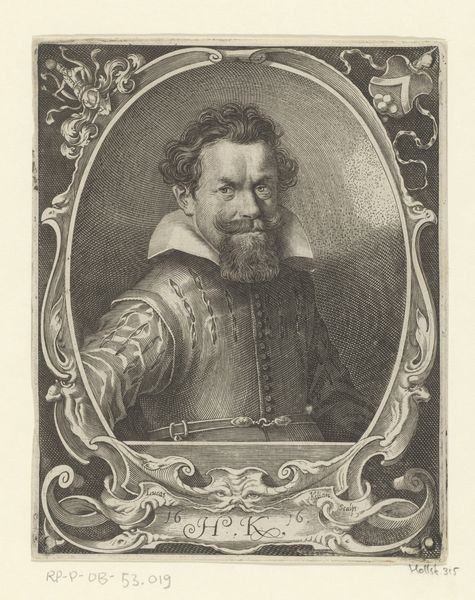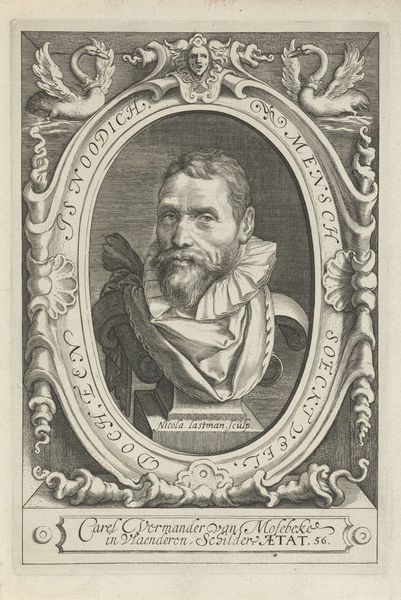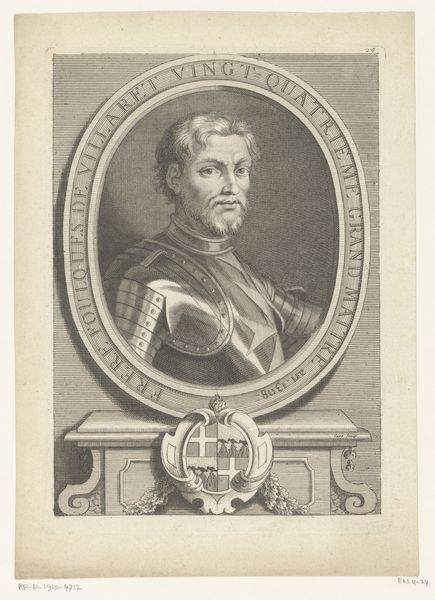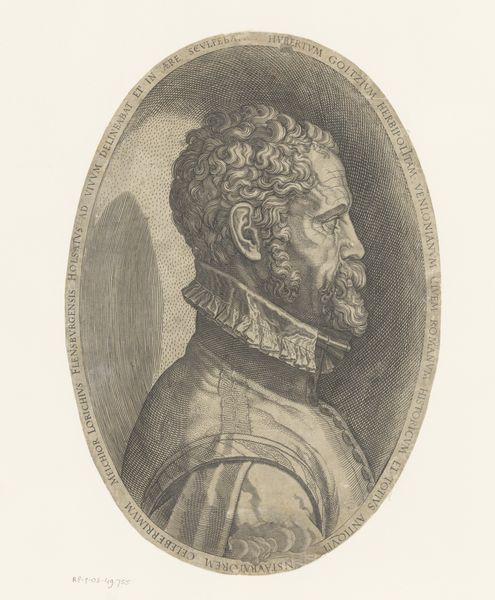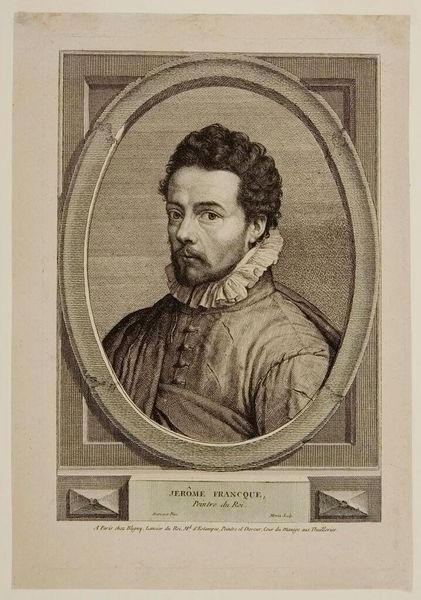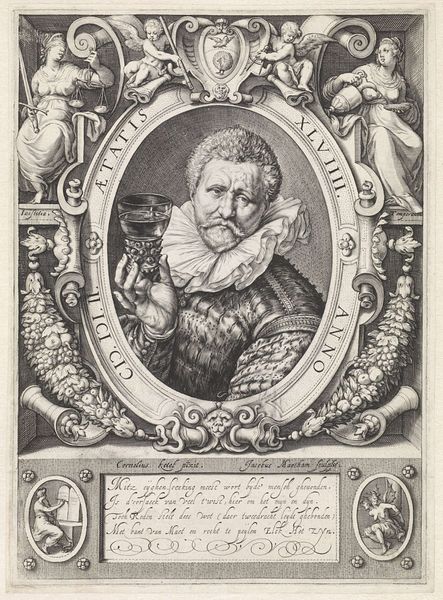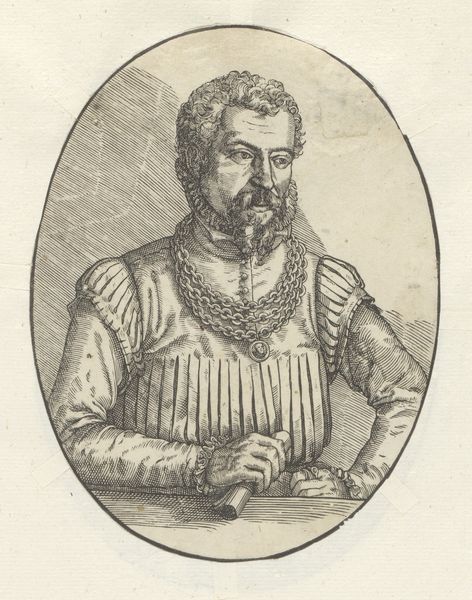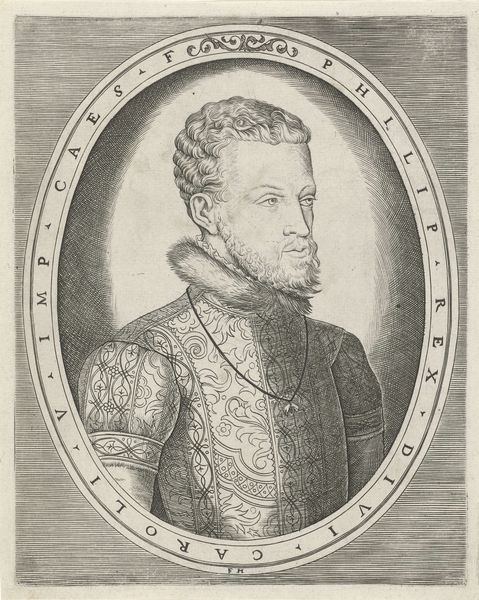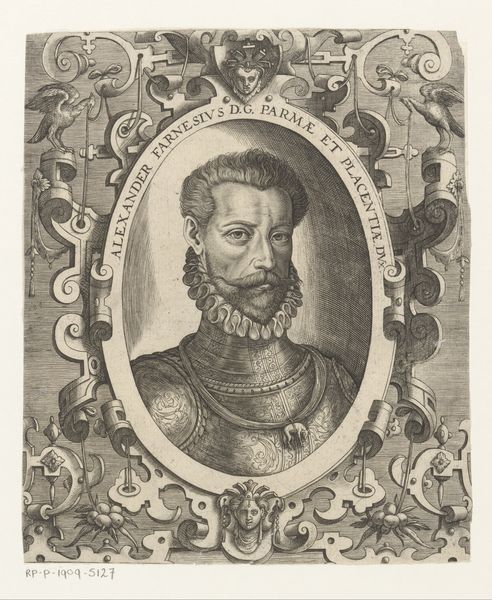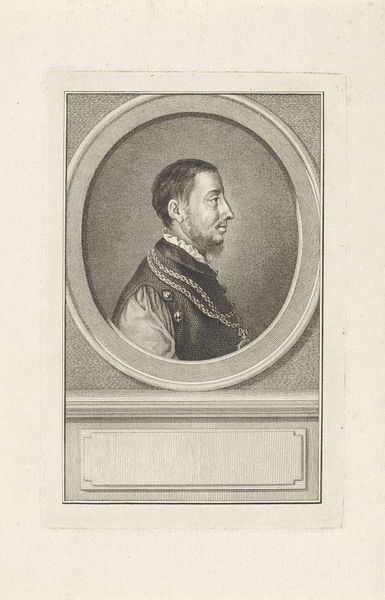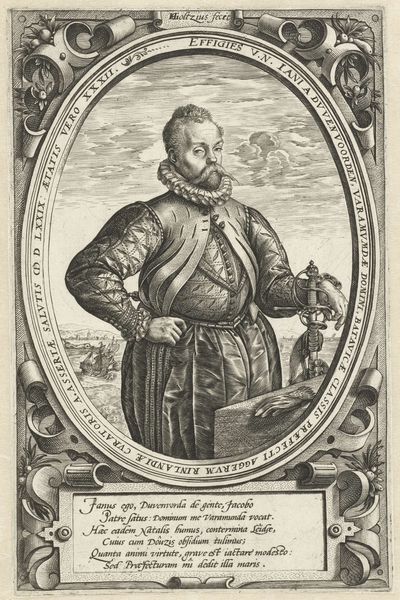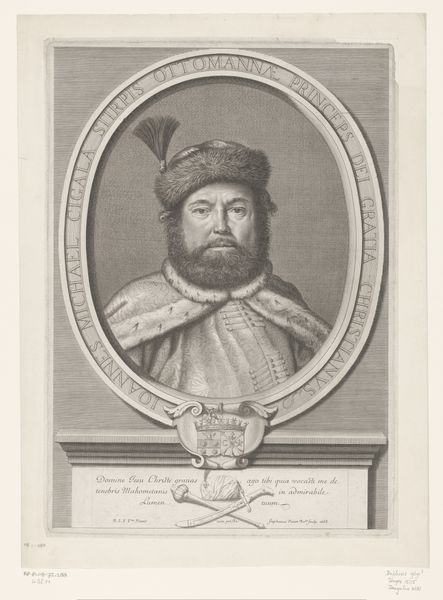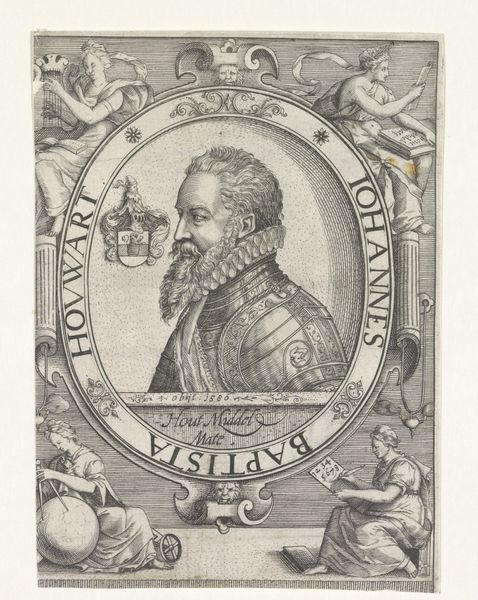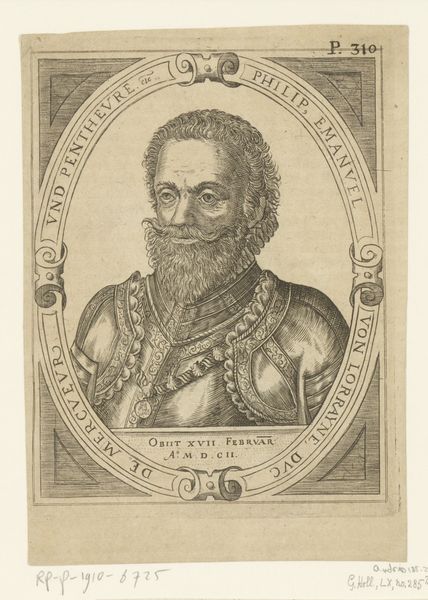
engraving
#
portrait
#
baroque
#
dutch-golden-age
#
engraving
Dimensions: height 207 mm, width 158 mm, height 240 mm, width 165 mm
Copyright: Rijks Museum: Open Domain
Curator: Well, look here, this is an engraving from between 1623 and 1686. It depicts Hendrick de Keyser. The engraver was Jonas Suyderhoef, working during the Dutch Golden Age, and there’s an undeniably Baroque flourish to the presentation. Editor: Oh, the frame itself feels so grand and sort of…wiggly, almost humorous, you know? Not at all what I expect from a portrait of this period. He looks rather severe in contrast to the flourish and fancy type all around. Curator: That contrast speaks volumes, I think. Suyderhoef is consciously presenting Keyser—a noted sculptor and architect in Amsterdam—within a framework that broadcasts not only his status, but also the burgeoning wealth and artistic confidence of the city itself. Amsterdam at that time was feeling very cosmopolitan. Editor: The oval cartouche is just dripping with embellishment. Like, who knew a stone carver could elicit this kind of visual fanfare? But, there's such sharp, focused line-work in the face; you can really see the weight of his jowls and that intense stare. A very deliberate choice, to have so much filigree but also that unflinching gaze! Curator: It’s interesting you say that. Think about the function of such a print—it's part portrait, yes, but also part public announcement, solidifying de Keyser's position within Amsterdam's elite cultural circles. Also note the text at the bottom. It highlights his impact as a sculptor. "He gave life to marble…" I imagine that resonates deeply with local sculptors and patrons who encountered this print. Editor: Exactly, there's the man but then there is the legacy that the printed statement promises. The almost aggressive boldness of the lettering speaks of solid pride. Also consider how engravings are often displayed or shared within the scholarly or artistic community... Maybe they served as a sort of collector card! I can also see one tacked up in de Keyser’s studio or the homes of his well-to-do clients. A reminder of status for all to appreciate! Curator: An intriguing thought! It's these intersections of social practice, artistic intention, and material form that bring these prints to life, centuries later. Thanks to institutions collecting these, we can reflect about those complex layers today. Editor: Definitely, makes you wonder whose portrait we might be preserved in years to come, right? A fascinating testament to both an individual and the art scene they inhabited.
Comments
No comments
Be the first to comment and join the conversation on the ultimate creative platform.
